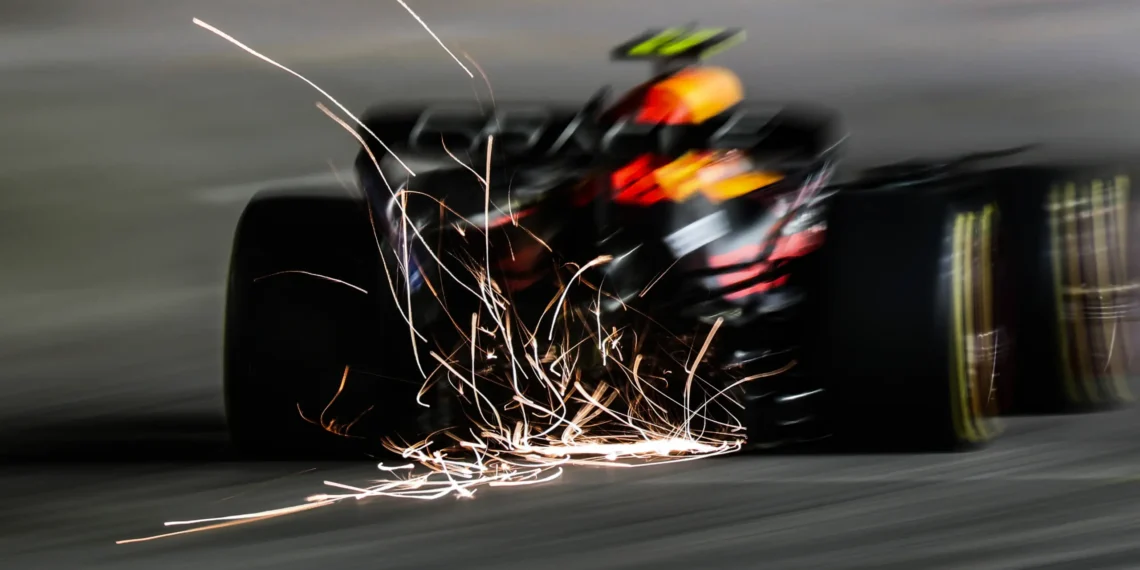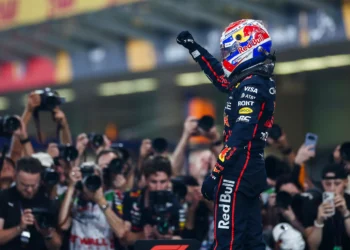Max Verstappen’s masterclass at the recent Grand Prix left fans and critics buzzing, as he expertly orchestrated a race that showcased his unrivaled skill and strategic prowess. Amidst a backdrop of pre-race uncertainties surrounding tire performance and pit stop strategies, one thing was clear: the championship leader was poised to seize every opportunity.
The race day commenced with a flurry of questions: Would the tires hold up under pressure? How many pit stops would be optimal? Could McLaren’s wet qualifying pace translate to dry conditions? As the lights went out, it became evident that Verstappen was not just another driver; he was a force of nature behind the wheel. From his second-place starting position, he launched into the lead with a breathtaking start that left competitors scrambling.
While Verstappen deftly navigated the early laps, managing tire conservation against a relentless pace, Lando Norris faced a critical blunder. A costly mistake at Turn 1 saw him run wide, allowing Verstappen and George Russell to fly past. Norris later admitted, “Even if I’d got through Turn 1 ahead, I don’t think I’d have won; Max was just too fast for us.” This admission resonated with his team, as McLaren strategists pondered what might have been had Norris retained his position.
George Russell, meanwhile, grappled with tire degradation after pushing too hard too early, a miscalculation that forced an early pit stop. His aggressive pursuit of Verstappen on his second set of tires ultimately made him vulnerable to Norris, who capitalized on superior traction to reclaim a podium position. The race dynamics shifted in an instant, underscoring the delicate balance of tire management that defined the day.
The intrigue didn’t stop there. Kimi Antonelli, starting from the back, executed a near-miraculous zero-stop strategy that propelled him into contention for the top spots. His hard tires, older than his rivals’, showcased a surprising pace that left many jaws on the floor, particularly when he eclipsed Oscar Piastri’s McLaren after both were later disqualified. Antonelli’s ascent through the field was a testament to his skill and the unpredictable nature of the race.
As the laps unfolded, Verstappen continued to put his competitors to shame. He recorded the fastest lap, a clear signal that he had more to give. The Red Bull star reflected post-race, “Today it was just about seeing how much you could push, especially in the first stint on the more fragile [medium] tire.” His confidence was palpable, and it was backed up by a performance that not only secured his 69th career victory but also reinforced his status as the driver to beat.
However, it wasn’t all smooth sailing for Norris, who faced severe fuel consumption issues in the race’s final laps. Communication with his engineer revealed a struggle to manage the car’s fuel load, leading to a tense finale where every ounce of efficiency was paramount. The scrutiny didn’t end there, as officials investigated potential plank wear on his car, adding another layer of drama to an already electrifying race.
In a world where the margins are razor-thin and every decision counts, Verstappen’s ability to exploit his rivals’ weaknesses while maintaining peak performance set him apart. The race served as a stark reminder of the unpredictability of motorsport, where a single misstep can shift the tide, and a champion’s resolve can shine through the chaos. As the dust settles, one thing is indisputable: Max Verstappen remains a formidable force in the world of Formula 1, a driver who thrives on the edge and leaves nothing to chance.










